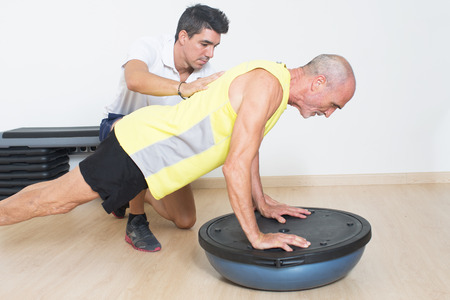Elderly Challenges

Knee osteoarthritis
OA of the knee can occur at the patello-femoral joint, the tibio-femoral joint, the superior tib-fib joint, or any combination of the above.
Common presentation is pain and stiffness, ranging from achy at rest to sharp pain with movement. You can experience problems going up and down tars and the knee might feel weak. You may also feel clicking or locking collapsing and crunching as you bend.
Hip osteoarthritis
Physiotherapy treatment can greatly improve hip range of movement, decrease pain and improve muscle strength around a hip joint affected by capsular restrictions and limited range of movement. Physiotherapy treatment can also significantly improve function and decrease hip pain associated with osteo-arthritic changes confirmed by X-ray.
You can present with sudden onset of acute hip pain, however this can deteriate slowly without signs and symptoms. You can slowly lose medial rotation, followed by abduction and extension of the hip joint
Associated Low Back Pain
Hip joint extension range is essential for walking, so if there is a gradual loss of this range, you may experience the onset of low back pain for some time before the hip joint itself becomes painful. This is due to the increased shear forces on the L5/S1 segment. It is essential therefore to assess the hip joint range of movement if you have recurrent or chronic non-specific low back pain, and even, but who continue to suffer recurrences, in case the hip is contributing to the problem.
Benign Paroxysmal Positional Vertigo (BPPV)
BPPV is a disorder of the inner ear, which is characterised by episodes of vertigo that are position dependent. ‘Benign’ refers to the fact that this condition is not due to any serious pathology and that the prognosis for recovery is good. ‘Paroxysmal’ refers to the swift onset of the vertigo, and ‘positional vertigo’ refers to the spinning/dizzy sensations which you may experience in certain positions.
The cause of BPPV is related to the presence of abnormal debris within the semicircular canals. The debris is usually small crystals which have dislodged from another part of the inner ear. This debris causes abnormal stimulation of the sensory hair cells in the semicircular canal and leads to the sensations of dizziness and vertigo experienced in BPPV.
The common presentation is intermittent episodes of vertigo. Vertigo is an abnormal feeling that you or your surroundings are in motion. The vertigo is brought on by changes in your head position (e.g. rolling over in bed, looking upwards or bending forwards), and lasts less than one minute.
Other symptoms can include light-headedness, dizziness, nausea, and feeling off balance.
Falls
As we age we lose our strength, mobility and proprioception consequently resulting in an increased risk for falls. The are many negative effects that can result from falls this being fractures, muscular injuries and decrease confidence to complete general life activities.


